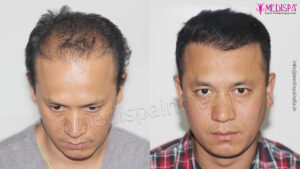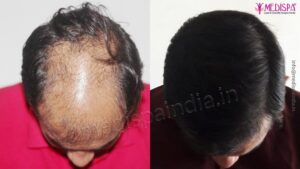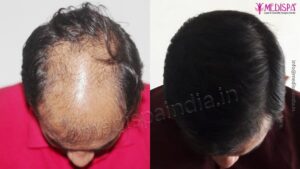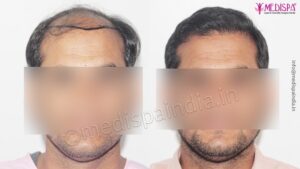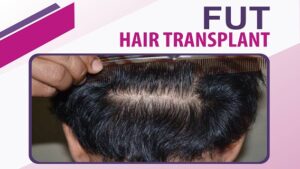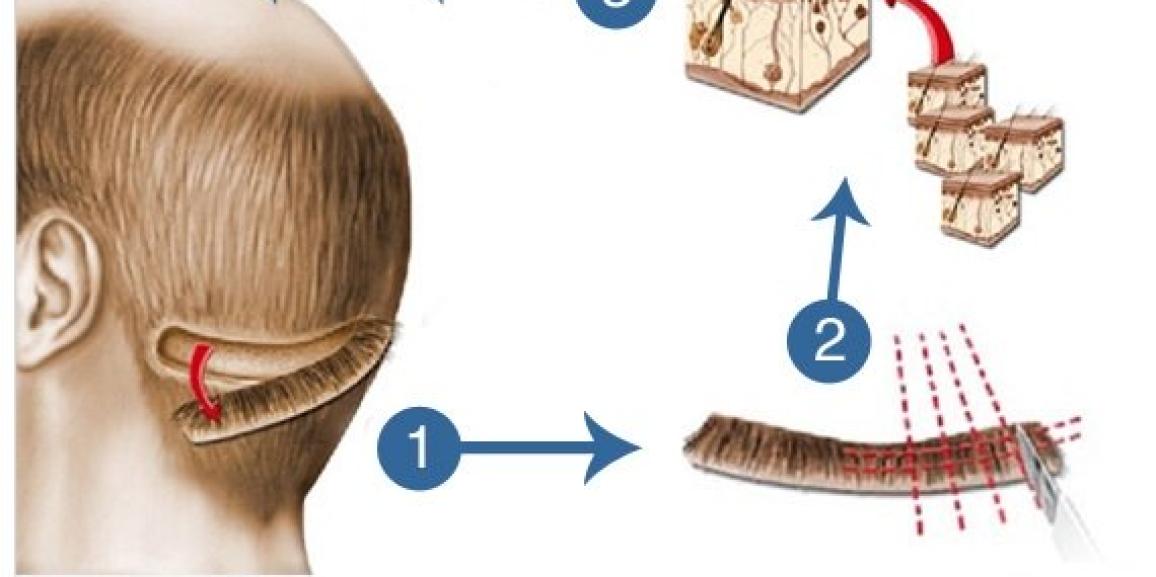
A hair transplant is a quick and easy procedure. These days, it is quite successful. Many people with hair loss have experienced good hair growth as a result of the procedure. The most successful method of treating hair loss has been identified as a hair transplant.
The hair transplant process is carried out in a series of easy steps. The hair roots are taken out from the donor area and then planted at the bald area. The common donor areas used to take out the hair roots are back and sides of the head, chest, axilla, beard etc. The donor area is chosen as they contain the permanent hair roots. These hair roots grow at the bald area for lifetime and give permanent results.
Thus, the hair transplant procedure is very well liked among the people.
Hair transplant in India is a highly popular. A few hair transplant clinics in India are becoming rather well-known. These clinics provide top-notch amenities at a reasonable price.
The Medispa hair transplant centre is one of the best places to get a top-notch hair transplant. We offer the best services at fair prices.
Are you trying to find a reliable clinic that can provide you with the best advice?
The Medispa clinic can be relied upon to provide honest and straightforward hair loss therapy.
The two main methods used in hair transplantation are:
- FUT (Follicular Unit Transplant), which involves separating a small strip of scalp skin from the areas where the permanent roots are located and transferring it to a room where individual hair grafts are separated. The chosen recipient’s bald region is then implanted with these separated individual hair transplants. For the optimum result and precise details, each process is carried out at high loop magnification. A cutting-edge, ground-breaking procedure known as “trichophytic closure” is used to sew back the donor region, allowing the donor area to recover and leave nearly undetectable scars.
- The FUE (Follicular Unit Extraction) hair transplant procedure involves removing individual hair grafts from the scalp region, where the permanent roots are located, and then transplanting those hair grafts straight to the targeted bald area. Each graft should be removed using this procedure from a wider distance to achieve almost undetectable scarring at the donor location.
The ability to harvest a bigger number of hair grafts—between 3000 and 3500—is only one of the FUT Hair Transplant procedure’s few benefits. Therefore, in severe bald situations like Norwood grades V and VI, this treatment may be the best option. Second, this method can prevent patients from shaving their heads, which is more common among female patients and certain men. Thirdly, because to the ground-breaking “trichophytic closure” suturing procedure, this creates an almost undetectable linear scar at the donor location.
What to expect after FUT hair transplant?
What to anticipate following a FUT Hair Transplant treatment appears to be a widespread concern among patients. Patients are urged to wait for a period of healing before they fully recover and before the benefits of the therapy start to become visible.
Following FUT surgery, one should anticipate experiencing scabbing in the scalp’s recipient region and perhaps forehead swelling. The donor region may potentially cause the patient some discomfort, although this may be managed with common medicines and will soon pass. Your surgeon will correctly advise you on this, but in general, it takes 10–12 days before the scabbing goes away before sutures are taken out. The new hair transplants may shed between 14 days and 2 months; this is due to the grafts’ resting period and is often nothing to be concerned about.
The new hair will begin to grow after around 4 months, and it might take up to a year for them to thicken, mature, and resemble other natural hair on the scalp. However, it is strongly encouraged to visit your surgeon for regular check-ups or follow-ups during the entire post-operative period and to carefully adhere to his or her recommendations.
After a FUT hair transplant procedure, there might occasionally be a few mild side effects, such as bleeding, infection, bruises around the eyes, itching, and hair follicle irritation. These issues, if they arise at all, are minimal and often go away within a few weeks. Therefore, if you have a skilled surgeon doing the treatment and assisting you during recovery, you shouldn’t be concerned. Therefore, choose the appropriate surgeon and clinic is vital!
Success of FUT hair transplant
Every hair transplant technique has the potential to yield positive outcomes. Although FUT hair transplantation is a delicate process, it offers several benefits. This approach has a success percentage of between 98 and 99%.
The higher visibility when using this strategy is the reason for its high success rate. The hair roots are more likely to survive as a result. Each hair root is examined under a microscope as it is being extracted.
The FUT procedure requires a doctor with exceptional expertise since it is so precise. The doctor should have extensive training, knowledge, and expertise. The correct clinic must be chosen before beginning any hair transplant procedure. For any hair transplant procedure to produce the greatest results, using high-quality equipment is crucial.

